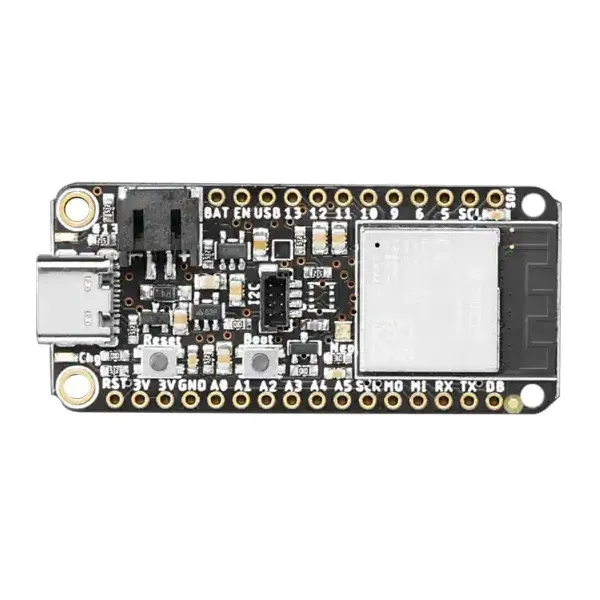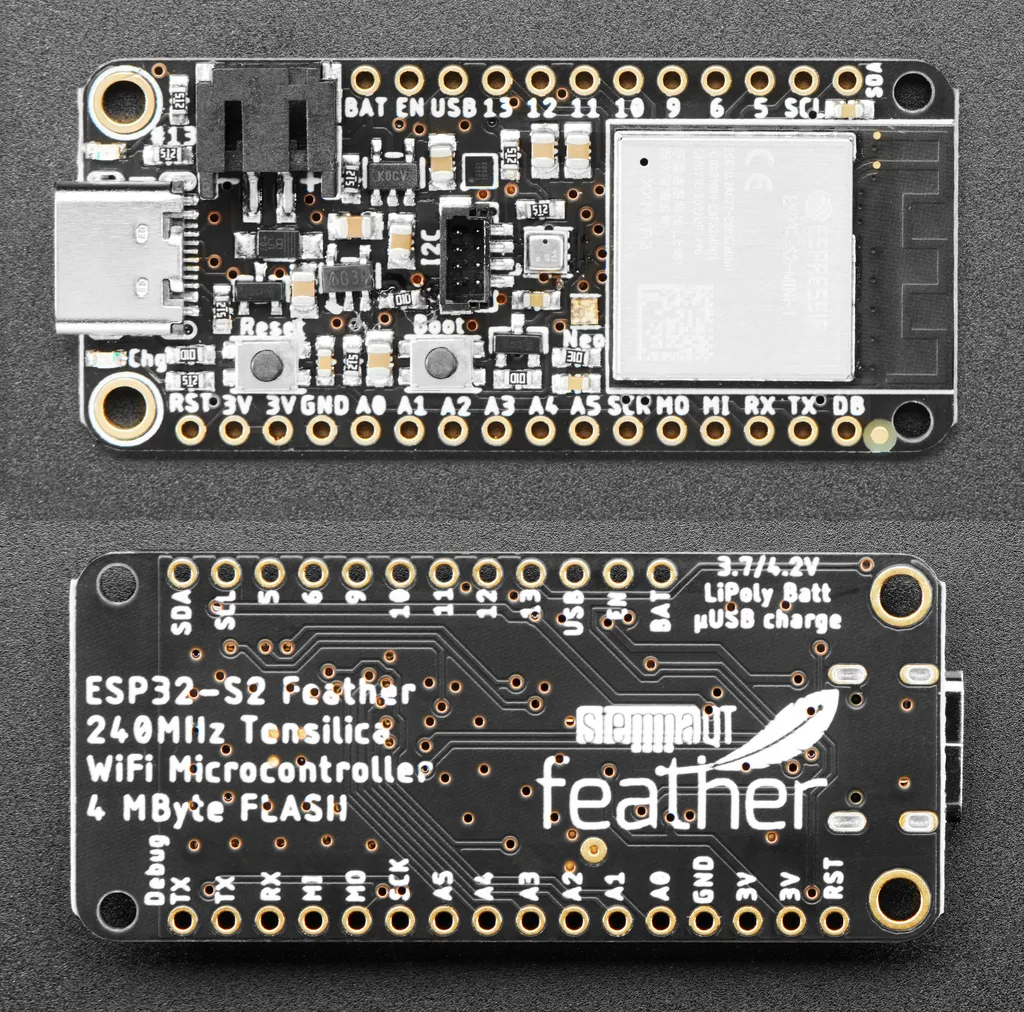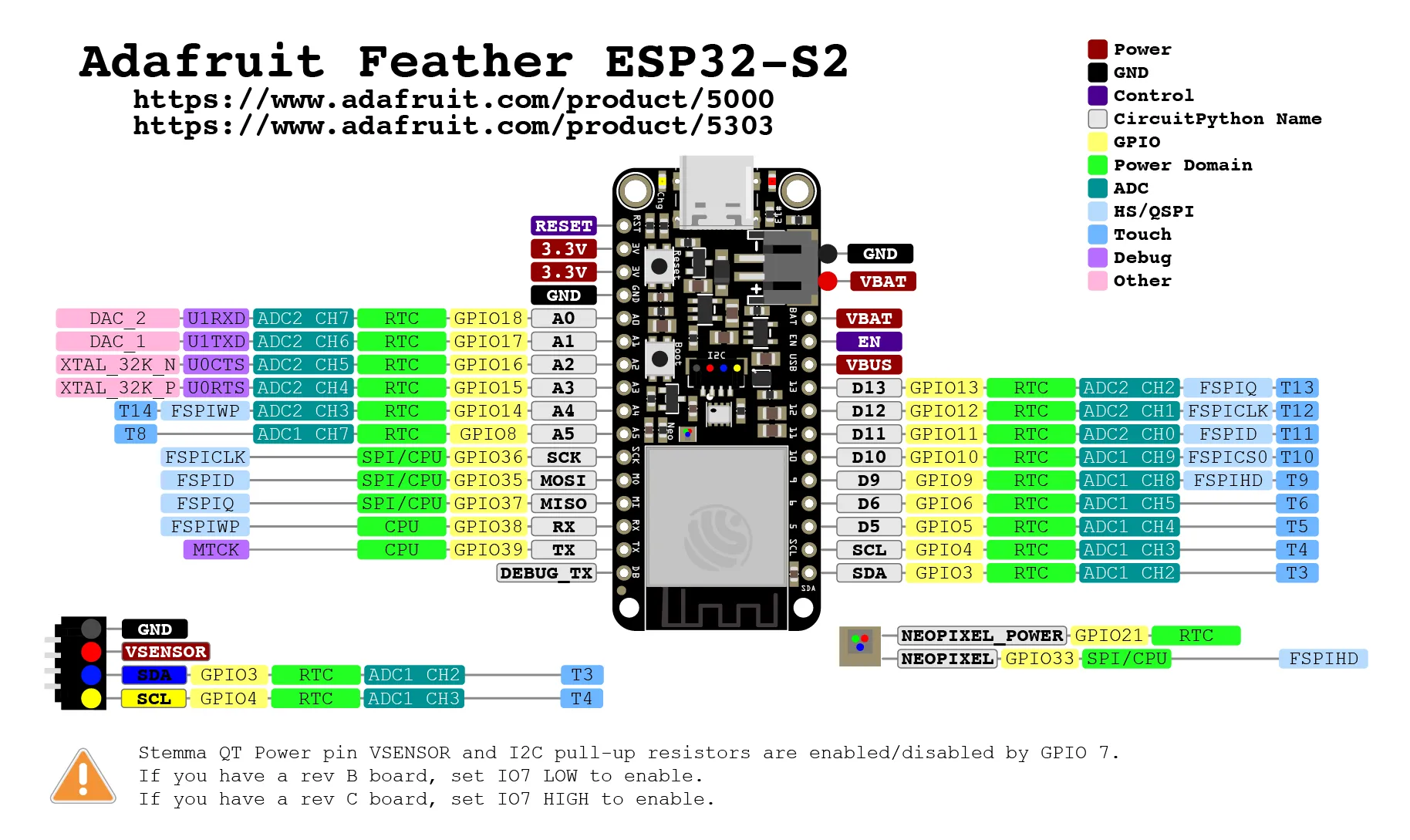
Available from:
Manufacturer:
Adafruit.com
Install method:
USB to Serial
| GPIO # | Component |
|---|---|
| GPIO00 | User |
| GPIO01 | None |
| GPIO02 | None |
| GPIO03 | I2C SDA 1 |
| GPIO04 | I2C SCL 1 |
| GPIO05 | User |
| GPIO06 | User |
| GPIO07 | Output Hi |
| GPIO08 | User |
| GPIO09 | User |
| GPIO10 | User |
| GPIO11 | User |
| GPIO12 | User |
| GPIO13 | User |
| GPIO14 | User |
| GPIO15 | User |
| GPIO16 | User |
| GPIO17 | User |
| GPIO18 | User |
| GPIO19 | None |
| GPIO20 | None |
| GPIO21 | Output Hi |
| GPIO33 | WS2812 1 |
| GPIO34 | None |
| GPIO35 | User |
| GPIO36 | User |
| GPIO37 | User |
| GPIO38 | User |
| GPIO39 | User |
| GPIO40 | None |
| GPIO41 | None |
| GPIO42 | None |
| GPIO43 | None |
| GPIO44 | None |
| GPIO45 | None |
| GPIO46 | None |
{"NAME":"ESP32-S2 Feather","GPIO":[1,0,0,640,608,1,1,3840,1,1,1,1,1,1,1,1,1,1,1,0,0,3840,1376,0,1,1,1,1,1,0,0,0,0,0,0,0],"FLAG":0,"BASE":1}A Feather form factor ESP32-S2 dev board with 1S LiPo battery monitoring and an optional on-board BME280 sensor.
This board uses an ESP32-S2-MINI-1-N4R2 module with 4MB of flash and 2 MB PSRAM.
When the board is booted into debug by holding BOOT and pressing the RESET button the USB-Serial chip on the USB port exposes a serial connection. This can be used to easily flash new firmware.
Flashing
Flash using Tasmota Web Installer and select Tasmota ESP32-S2 option.
For esptool.py download i.e. tasmota32s2.factory.bin and run esptool.py write_flash 0x0 tasmota32s2.factory.bin
To put ESP32-S2 in flash mode GPIO0 needs to be pulled low.
Device Notes


Peripherals
WS2812BNeopixel- On
GPIO33(configured asWS2812) with power onGPIO21(configured asOutput Hi).
- On
- STEMMA-QT JST-SH I2C bus connector
- Both ports share the same bus, on
GPIO3(SCL) andGPIO4(SDA) (configured asI2C 1) andGPIO7for power (configured asOutput Hi). These ports are on the same bus as theSCLandSDApins labelled on the board. - Some early revisions of this board had their I2C power control logic reversed, requiring
GPIO7to be pulled low instead of high to provide power and pull-ups to the I2C bus. If I2C isn’t working, try changingGPIO7toOutput Low
- Both ports share the same bus, on
BME280temp/humidity/pressure sensor- On I2C bus, supported by Tasmota
- 1S LiPo battery management subsystem with 2-pin JST-PH connector
- Includes
LC709203battery monitor IC on I2C bus, not currently supported by Tasmota.
- Includes




